Liberal Arts for the 21st Century
2022-25
1. Introduction
In 2021 the University Planning Committee (UPC) identified the need for a new Strategic Academic Plan for Mount Allison. In preparation for this, the UPC first commissioned a survey of students, faculty, and alumni to determine the overall goals of a Mount Allison Education.
The response to the survey was remarkable, both for the level of engagement from all parties, and in the strong convergence of a set of crucial goals. These goals are identified in Section 2. Following this exercise, the UPC identified 12 thematic areas for the new plan, which were presented to the Faculty Council in November 2020 and then approved by the Senate in the spring of 2021. Working Groups for each theme were established in the summer of 2021, which subsequently worked to develop the recommendations outlined in Sections 4–16 and summarized in Section 17.
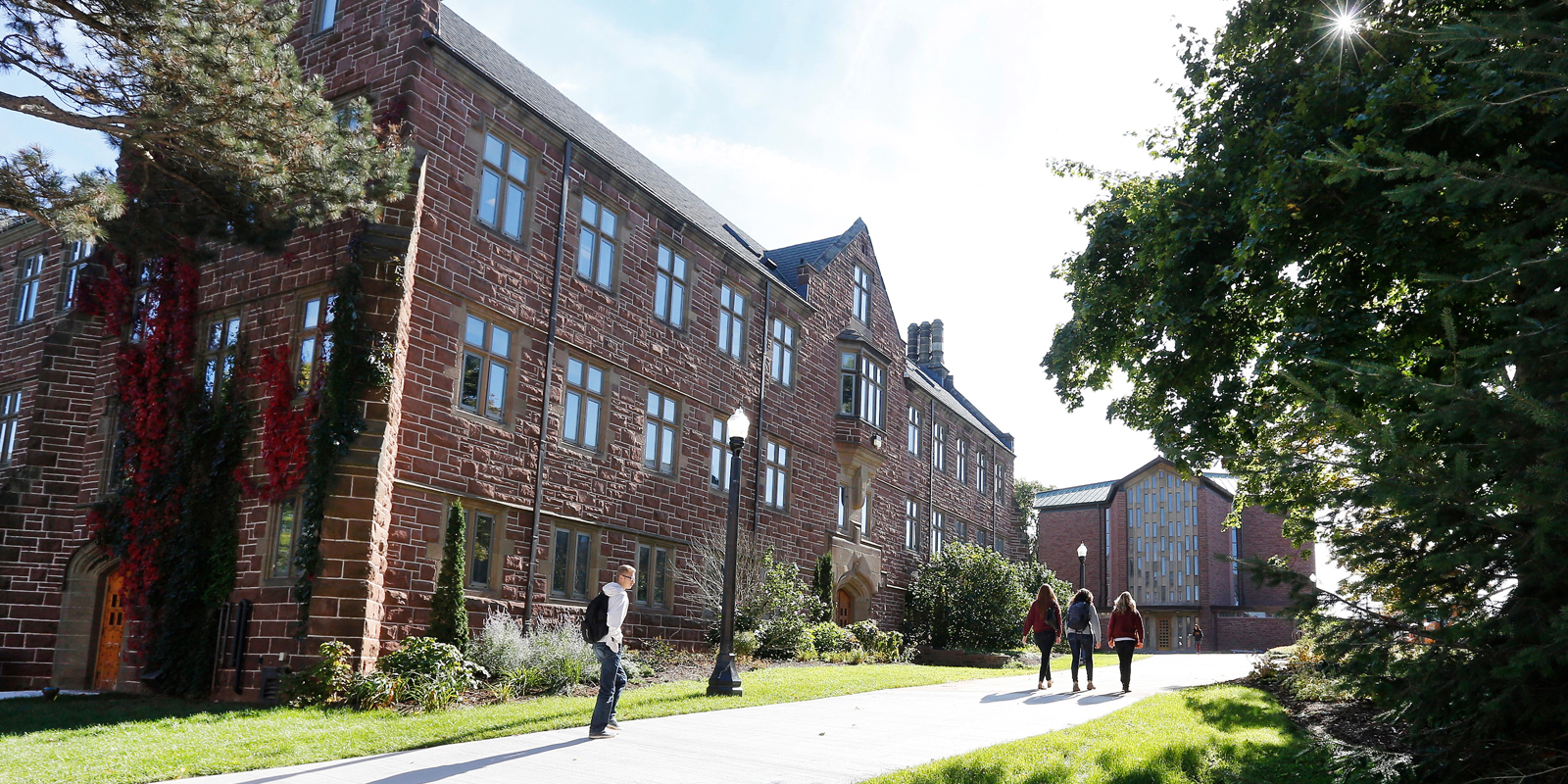
It is important to note (for posterity if nothing else) that this work was conducted online via Microsoft Teams as the University was mired in the COVID-19 global pandemic, and face-to-face meetings were not possible. Indeed, the pandemic not only accelerated the need for a new plan, but also informed many of the recommendations to follow. Faculty and staff responded to the new limitations imposed by the pandemic by expanding the range of learning opportunities and formats for students. This new plan builds on this experience while also strengthening our high-impact, personalized scholarly community and learning environment that has sustained us for 182 years.
Universities function at their best when they engage in consultation and collegial governance, particularly for academic planning. This plan was developed with input from students and key staff members, but primarily by our faculty and academic staff!
Each of the 12 working groups operated with a level of engagement, imagination, ingenuity, and thoughtfulness that would be the envy of most universities. From the beginning, our plan was to define actionable recommendations and not just aspirations. I am proud of this work, and I believe each recommendation that follows can be achieved within the timeframe established.
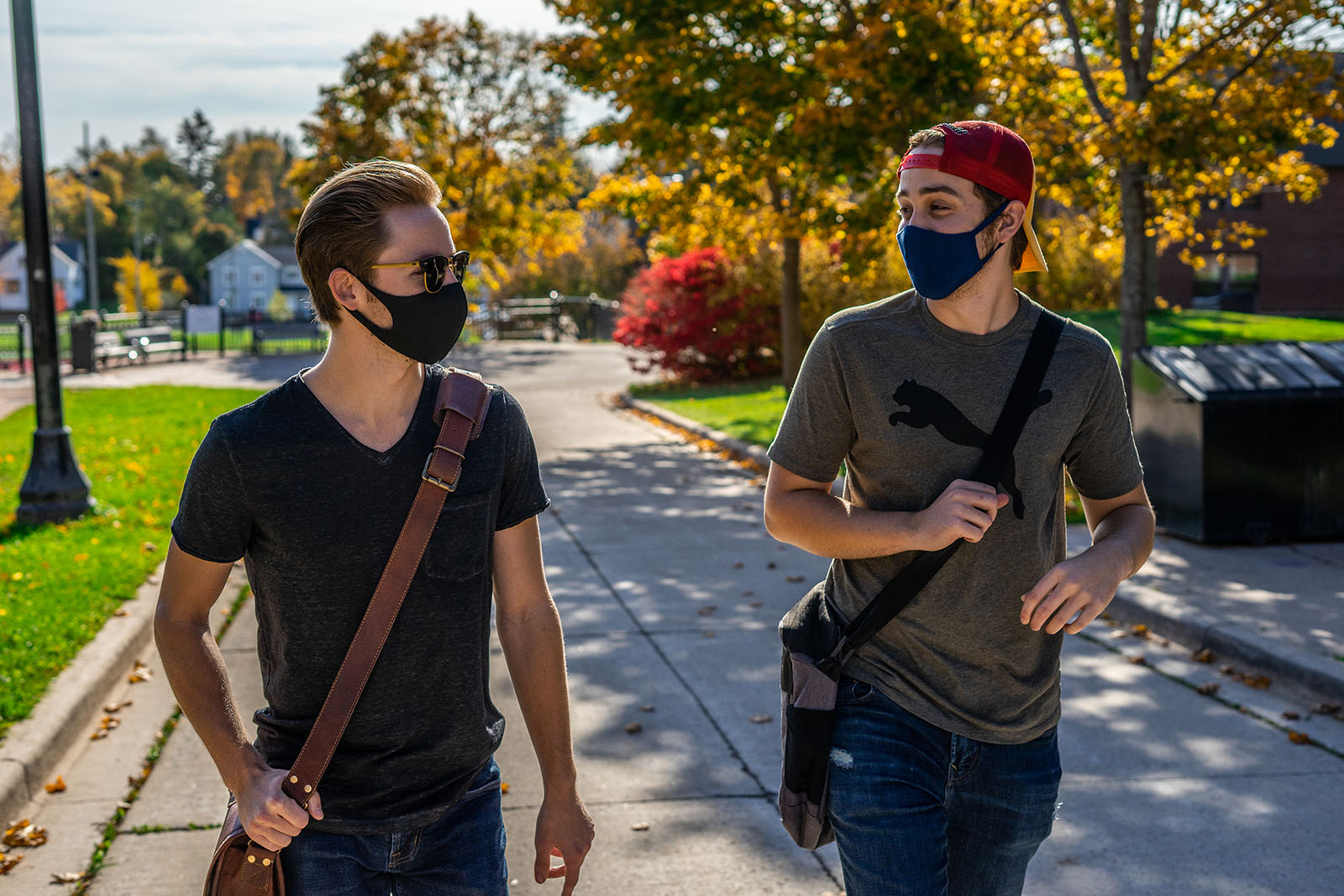
I want to thank the members of the working groups as well as the University Planning Committee for their work in creating this. A special note of thanks also needs to be extended to Lacey Decker Hawthorne, who had “planning” added to her role this year. She served with me on all the working groups, drafted text, advised on strategy, and edited the various document drafts.
You will notice that this plan does not identify any enrolment targets. Targets are important, and we are working on a comprehensive strategy for increasing our enrolment. We expect that many of the recommendations that follow will help us achieve this goal.
The overall purpose of this plan, however, is to elevate the level of academic quality and improve the academic working and learning environment with targeted recommendations for meaningful change.
While the scope of this plan may seem large (66 recommendations), it is important to remember that many of these reflect plans already under development. In total, I believe these recommendations will make a significant impact on the academic experience at Mount Allison for students, faculty, and staff.
Jeffrey J. Hennessy, Ph.D.
Provost and Vice President, Academic and Research
Chair, University Planning Committee
2. Goals of a Mount Allison Education
These are the results of a survey of “The Goals of a Mount Allison Education,” which was sent separately to faculty, students, and alumni at Mount Allison University in the winter term of 2021.
Survey results and recommendations
The survey asked respondents to rank 32 potential goal statements from one star (unimportant) to five stars (crucial). The following 10 goals emerged as being crucial to all three groups:
- Communication skills
- Developing a passion for something
- Critical evaluation of information
- Inspiration to be a lifelong learner
- Development of resilience
- Analytical and problem-solving skills
- Creativity
- Interdisciplinarity
- Understanding how humans relate to each other
- Exploration of social issues and social justice matters
RECOMMENDATION
Academic Programs will evaluate the ways in which they can immediately contribute, or can improve their contribution, to achieving these goals.
Requires action by: Deans, department heads and program directors, academic units
Other goals were identified as also being important to at least two of the survey groups:
- Global citizenship
- Digital literacy
- Preparation for leadership roles
- Applied learning
- Research experience
- Preparation for graduate school
- Health and wellness
RECOMMENDATION
Academic Programs will consider which of these other goals are appropriate to their programs and how they can be achieved.
Requires action by: Deans, department heads and program directors, academic units
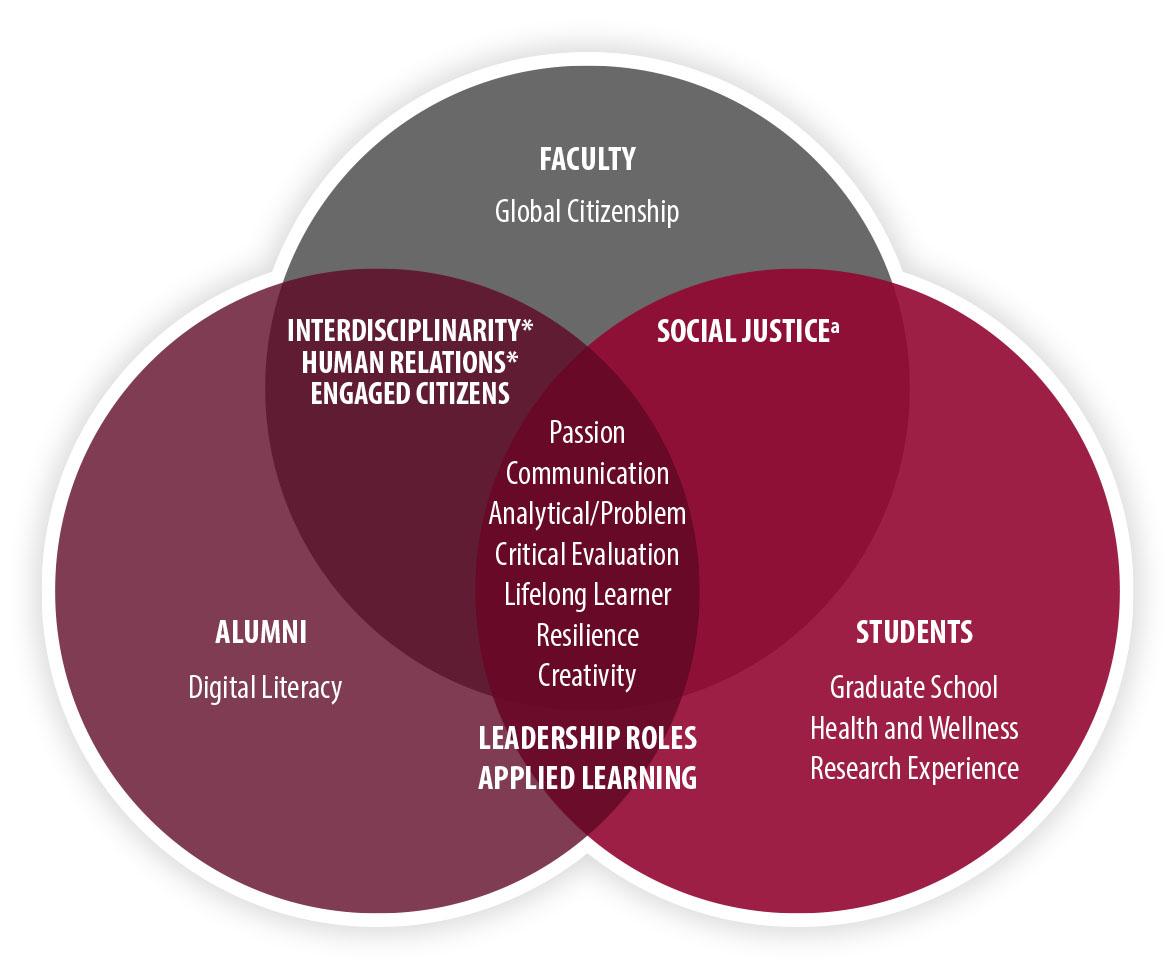
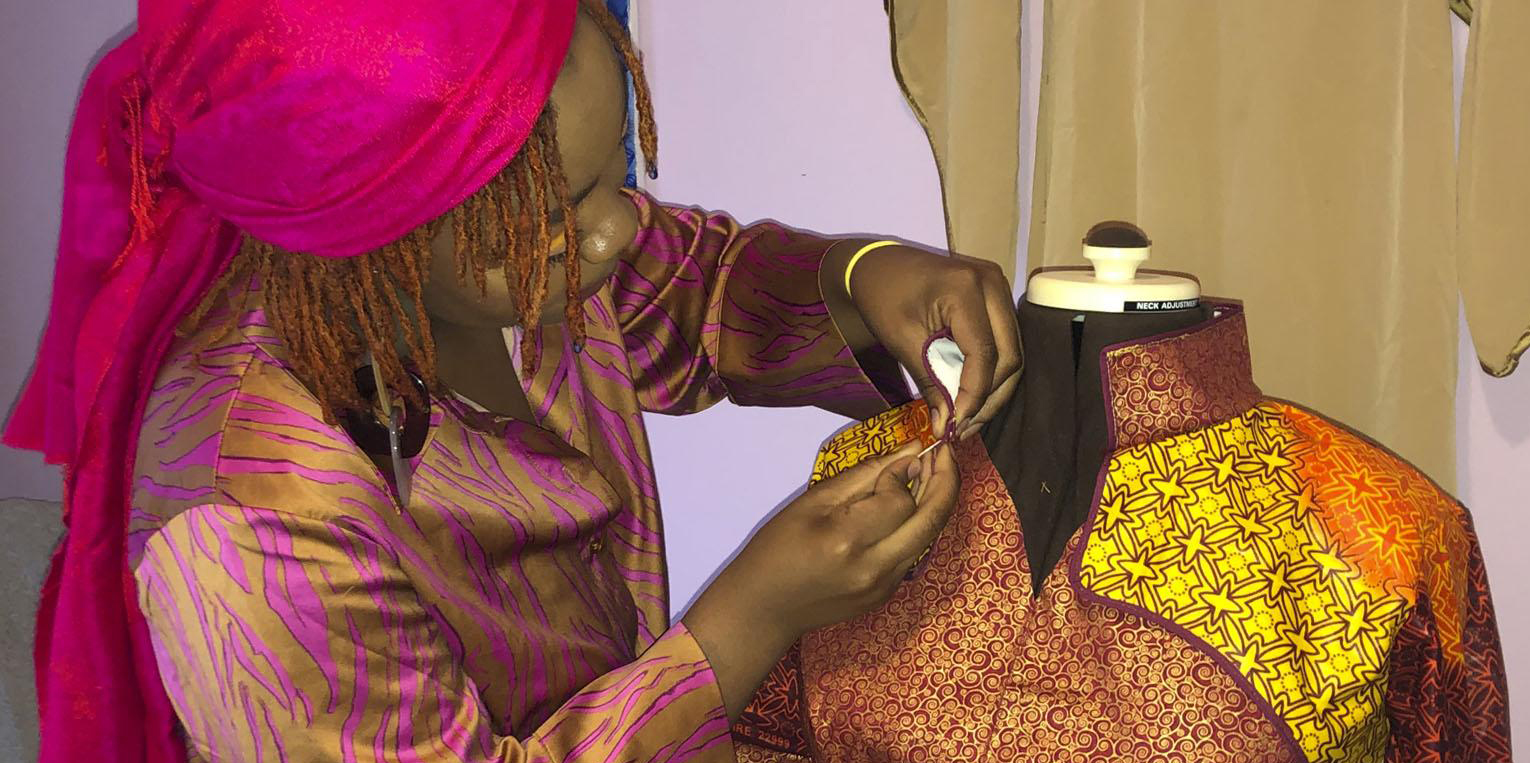
3. Strategic Roadmap
In 2019, President Boudreau, in wide consultation with the University community, established a strategic roadmap from which to frame the next stages of Mount Allison’s development.
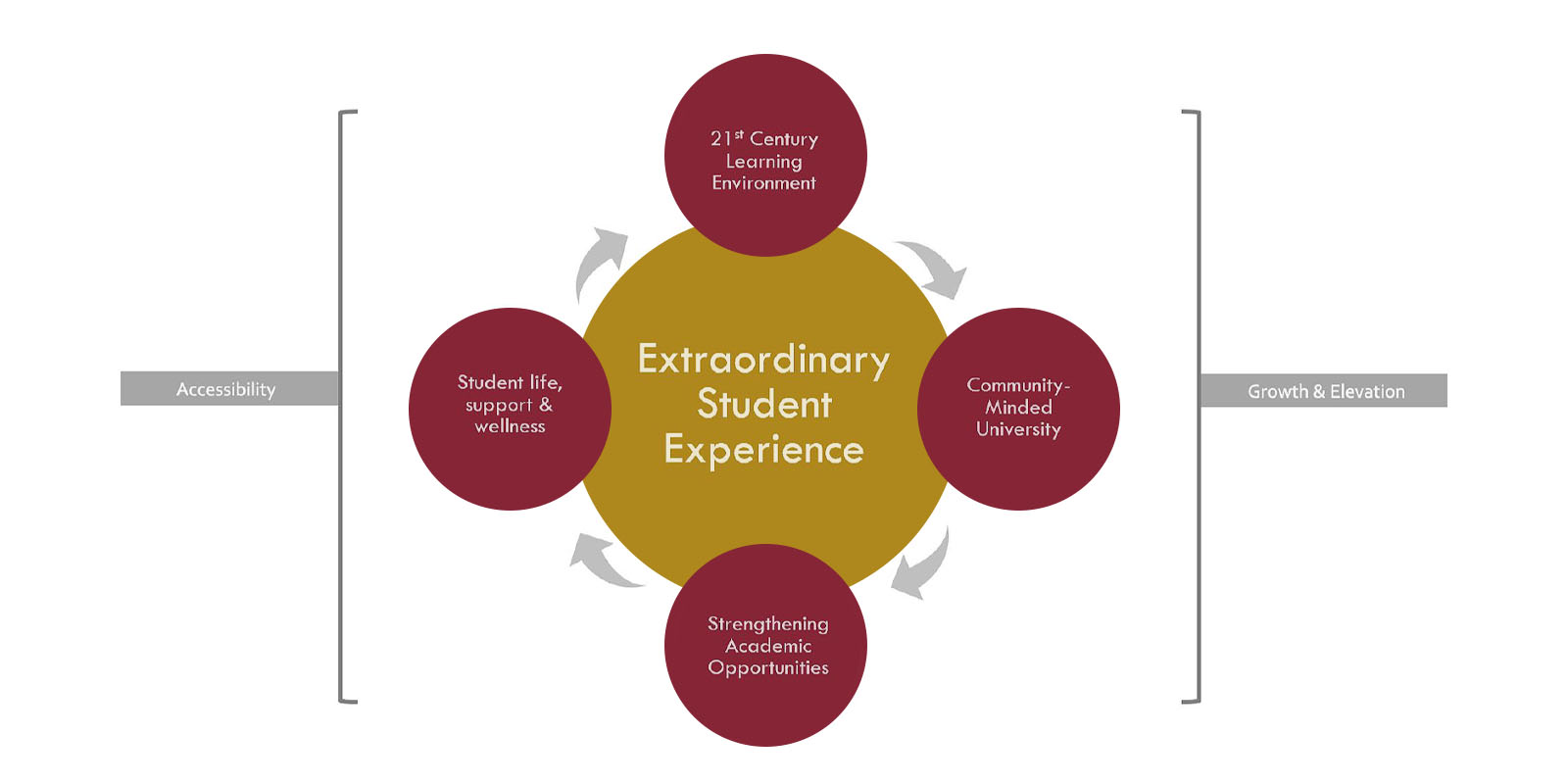
About the Strategic Roadmap
The roadmap focused on four pillars on which to build an extraordinary student experience:
- 21st-century learning environment
- community-minded university
- student life, support, and wellness
- strengthening academic opportunities
This strategic academic plan reinforces all aspects of this roadmap, but most significantly responds to the strengthening academic opportunities pillar. Each recommendation is designed to build a stronger academic culture for all members of the academic community, thereby contributing to the extraordinary student experience we all desire to provide.
4. Decolonization
Mount Allison, like all institutions of higher learning in Canada, must recognize the devastating impact of educational practice and policy on Indigenous peoples, and it must reconcile its role in perpetuating a colonial enterprise that spans centuries.
In addition to the Truth and Reconciliation Commission’s 94 Calls to Action that target higher education in specific disciplines (language, law, journalism), universities must also critically examine their history, past and current practices, and current composition to advance decolonization.
This will be an ongoing project that requires dedicated resources and must involve wide consultation, transparency, and collaboration. This Strategic Academic Plan will not be the guiding document for this, but there are key short-term academic initiatives that will continue some of the work that has already been done and that can provide a stronger foundation from which to intensify broader campus and community conversations.
Recommendations
- By 2025, have at least five Indigenous tenured or tenure-track faculty members, at least two of whom shall be Mi’kmaq.
Requires action by: University Planning Committee, deans, academic units, Elders-in-Residence, provost
- By 2025, internally approve a major and minor program in Indigenous Studies for submission to the MPHEC.
Requires action by: Indigenous Studies Program Working Group, academic program development officer, Elders-in-Residence, Academic Matters Committee, Faculty Council, Senate
- Mi’kmaq language course shall become a regular course offering beginning in 2022.
Requires action by: Canadian Studies program, dean of arts
- Indigenous Advisory Circle shall develop a protocols document for working with Indigenous students and Indigenous members of the wider community. This document will also inform how non-Indigenous persons can respectfully interact with Indigenous materials.
Requires action by: Indigenous Advisory Circle in consultation with Mi’kmaw and Indigenous experts and communities, and Elders-in-Residence
- Hiring procedures, career evaluation criteria, and research evaluation criteria will be revised to better support the hiring and career advancement of Indigenous faculty, and BIPOC faculty more generally.
Requires action by: MAFA, provost and deans, collective bargaining, Faculty Council discussion, Human Resources Department
- Academic Matters course and program forms will request information about decolonization initiatives.
Requires action by: Academic Matters Committee, Senate
- Create an information program on decolonizing the academy that includes resources on ways to decolonize all academic disciplines. This may include guest speakers and workshop leaders, a resource page on Gateway, peer learning sessions, training on research protocols, and other initiatives.
Requires action by: Provost, Marketing and Communications, deans, Elders-in-Residence
- The Libraries and Archives will review its collections, cataloguing and classification, instruction, spaces, and services in relation to the Truth and Reconciliation Commission of Canada’s Calls to Action and the CFLA-FCAB Truth and Reconciliation Report and Recommendations.
Requires action by: Library and Archives, University Librarian
5. Credentials and programs
Mount Allison has a long history of excellent four-year degree program offerings in science, arts, music, fine arts, and commerce.
A new Bachelor of Arts and Science degree structure was created in 2021 with Interdisciplinary Health Studies as its first major program.
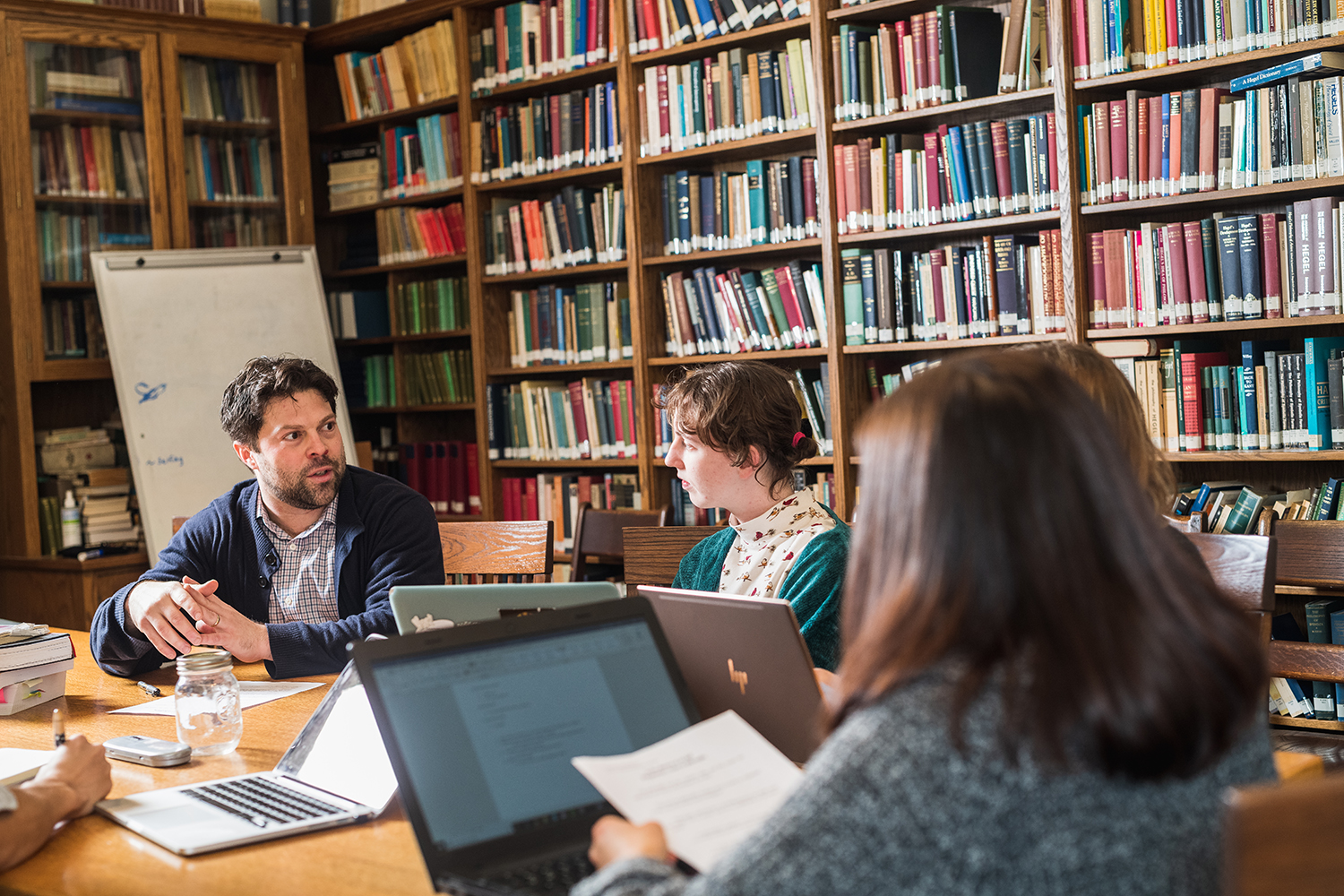
As options within these degree programs, Mount Allison also offers several embedded certificates, which provide students additional credentials within their programs. While there has been substantial new program creation and program innovation in the past three years, enrolment continues to be a challenge. Diversifying program and credential offerings will not only increase enrolment but will also increase accessibility to a more diverse range of potential students.
Recommendations
- (Re)commit to supporting existing undergraduate and graduate degree programs and the further development of graduate studies.
Requires action by: Provost, deans, University Planning Committee, Graduate Studies Committee
- By 2023, create new Bachelor of Arts and Science programs in areas of student interest.
Requires action by: Program Development Working Groups, deans, registrar, Academic Matters Committee, academic program development officer, Senate
- By Spring of 2022, conduct an inventory of existing embedded certificates to determine obstacles to completion and with the aim of improving student advising. The placement of certificates in the University calendar will also be reviewed for better visibility.
Requires action by: Registrar’s Office, provost
- Create standalone certificates in areas of potential student interest, with an intention of increasing access to different learner demographics and providing students with in-demand skills and competencies. These may run during the normal fall/winter course schedule, be taken in successive summer terms, or be available online. Academic Matters (Regulations) Committee will determine the basic structure and requirements for standalone certificates.
Requires action by: Program Development Working Groups, deans, registrar, Academic Matters Committee, academic program development officer, Senate
- By 2023, create two-year Associate Degrees in Arts (including social sciences). These will be non-major degrees but, with advising, can be continued as degree programs upon completion. Determine an appropriate administrative and advising mechanism for these programs.
Requires action by: Program Development Working Groups, deans, registrar, Academic Matters Committee, academic program development officer, Senate, provost
- By Spring 2022, allocate additional staffing resources to facilitate and promote articulation agreements, academic partnership agreements, and assess transfer credits. We will also pursue additional partnerships with academic institutions regionally and internationally.
Requires action by: Provost, President’s Cabinet, International Centre, Registrar’s Office
- By 2023, create a part-time, distance, and extension learning course delivery option including, but also expanding upon, the spring/summer offerings. Additional staff resources will be allocated to administer this program.
Requires action by: Provost, deans, registrar, faculty
- While part-time and distance education courses and programs may naturally employ part-time faculty members, new full-time degree programs will continue to be taught predominantly by full-time faculty members.
Requires action by: Provost, deans
6. First-year experience
The Working Group discussed the need for a signature common academic experience for new students.
Priorities and recommendations
It identified the following priorities:
- Excite students about learning and the value of liberal arts from the beginning
- Introduce students to a breadth of disciplines and ways of thinking about the world
- Allow for the development of a student cohort
- Immediately connect big ideas that students care about to the academic experience
- Establish common academic experiences: same book, piece of music, article, etc.
- Introduce experiential/service learning and community engagement
- Develop foundational university skills: research, academic integrity, writing etc.
The Working Group discussed a number of options and decided that the best vehicle to achieve this would be a foundation course for all first-year students to be taken in the first semester of their degree programs. The course would be three credits and feature the following:
- The first week would be dedicated to foundational skills (similar to START but for all students)
- The remainder of the course would focus on a common contemporary theme (which could change each year)
- The course would approach this theme from different disciplinary perspectives
- Small group (25-30) sessions to allow discussion
- Common curriculum with materials sent in the summer
- Science, Arts, Humanities, Social Sciences, and Business would all be represented in the curriculum
- Inclusion of a service-learning and community engagement component.
RECOMMENDATIONS
- A pilot version of a first-year foundations course will take place in the fall of 2022 for a limited number (app. 100) of incoming students. A steering committee of interested academic staff, librarians, and students will design the course in the winter of 2022. A survey of students and faculty involved in the course will be conducted at the end of the fall term to determine feasibility and desire to continue. The course will count as a distribution credit for entering students in the fall of 2022.
Requires action by: Steering Committee, Registrar’s Office, provost and deans, Senate
- A review of the distribution credit system will take place in the Winter of 2023 to determine if this course (or an expanded version of this course) could be a replacement.
Requires action by: Steering Committee, Registrar’s Office, provost and deans, Senate
7. Teaching-year structure
The Working Group discussed the limitations of the current teaching-year structure on both the student and faculty experience. We discussed block teaching as a concept and there was great enthusiasm for the idea, in general, but consensus that it does not work for all disciplines and many courses.
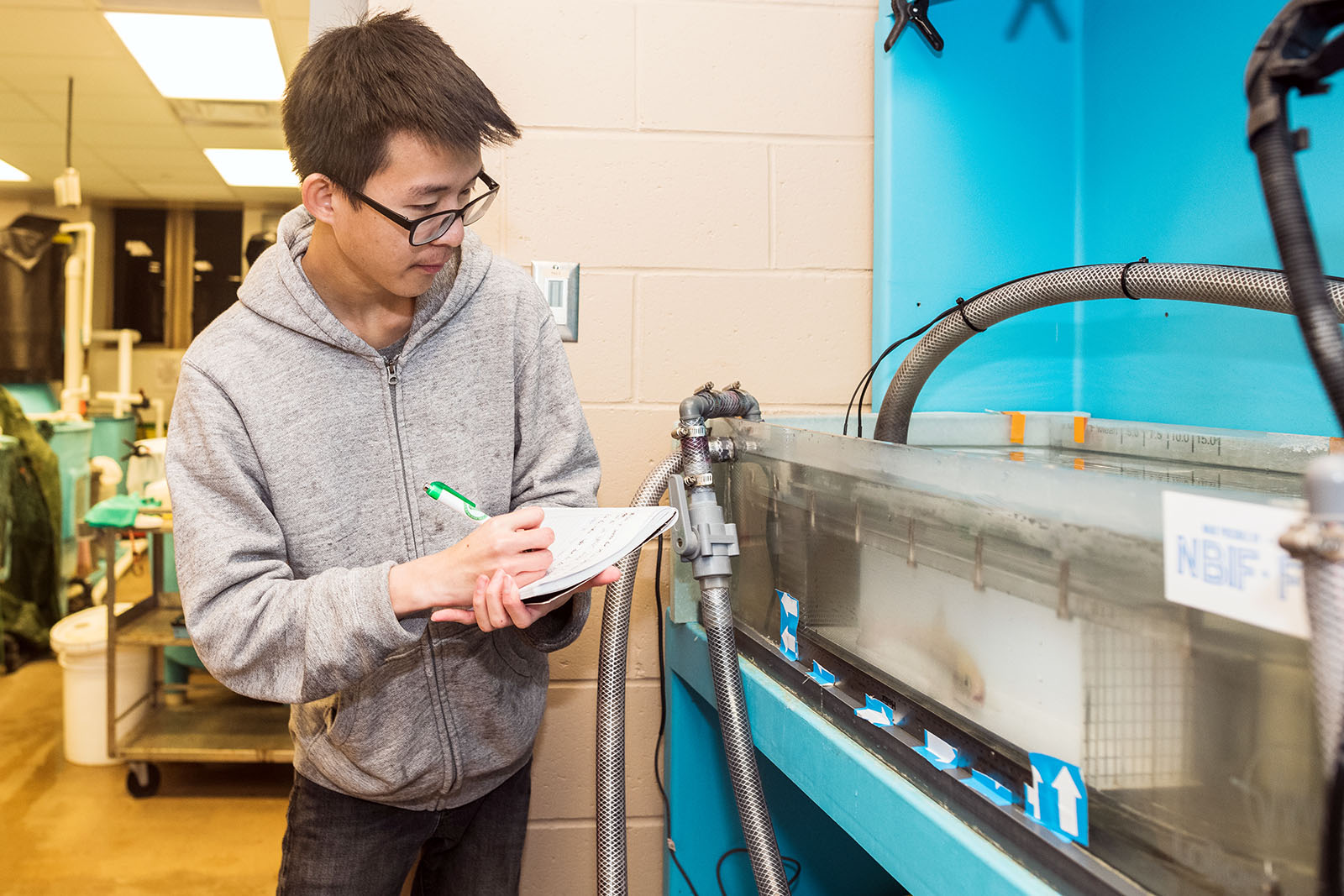
A hybrid approach that would allow for a block experience for some courses and the standard teaching year for other courses would provide students and faculty with a range of experiences and a more flexible yearly teaching and learning schedule. Some of the principles we discussed included:
- Better way to facilitate field-based experiential learning courses
- Moving away from “contact hours” as the primary measurement of a course
- An opportunity to provide more intensive course options for students and faculty
Recommendations
- Pilot a two-week intensive teaching term (The A-Term) in the late summer of 2022. The term would take place during the two-week period prior to commencement of the fall term. The intensive term would permit a range of learning experiences including full-credit courses, field experiences, off-campus course components, and other possibilities. Courses that use the two-week term as a course component will continue during the fall term but with a suitably reduced class schedule. Courses completed in full or in part during the intensive term will still be registered during the fall term.
Requires action by: Academic units and course instructors, Academic Matters (Regulations) Committee, Senate, registrar, provost and deans
- Work with the Office of University Advancement to source student bursary funds for students who may either have reduced summer employment hours in order to participate in this experience, or for whom the costs of a course experience may limit accessibility.
Requires action by: University Advancement, provost and deans
8. Grading and assessment
Discussions of grading and student assessment are not new to higher education, but perhaps the COVID-19 pandemic has illuminated issues with standard alpha-numeric summative grading practices.
Grading practices and recommendation
Alpha grades, numeric grades, and grade-point averages provide convenient metrics for student success as a means of global comparison.
This measure of comparison is imprecise, however, because the pathway through university is unique to each student and so the GPA offers only a rough estimate of academic success.
Research has also shown that grades can be an impediment to learning as they offer an extrinsic reward but lack the intrinsic motivation for students to diversify their learning experiences.
Some private, liberal arts universities in the United States have dispensed with grades either completely or for a portion of a student’s undergraduate degree.
In Canada, the grade/GPA retains widespread salience as a metric for student achievement, and so complete abandonment of this system would not be in Mount Allison’s best interest, despite the potential benefit to student learning. Some incremental options for alternative assessment will, however, enhance the learning experience.
RECOMMENDATION
Academic staff will be offered professional development training in alternative assessment options and “ungrading.”
Requires action by: Purdy Crawford Teaching Centre, Maple League, provost
9. Online learning
Mount Allison has long provided an intensive, immersive experience for students in a residential campus environment. Students thrive through close contact with faculty and other students in small classes, labs, tutorials, and experiential learning opportunities.
The COVID-19 pandemic required us to shift quickly into being able to offer courses remotely and online. While initially this may have been designed as an interim pandemic measure, faculty and students have identified some aspects of online learning that have been beneficial as outlined in recommendation 6 below.
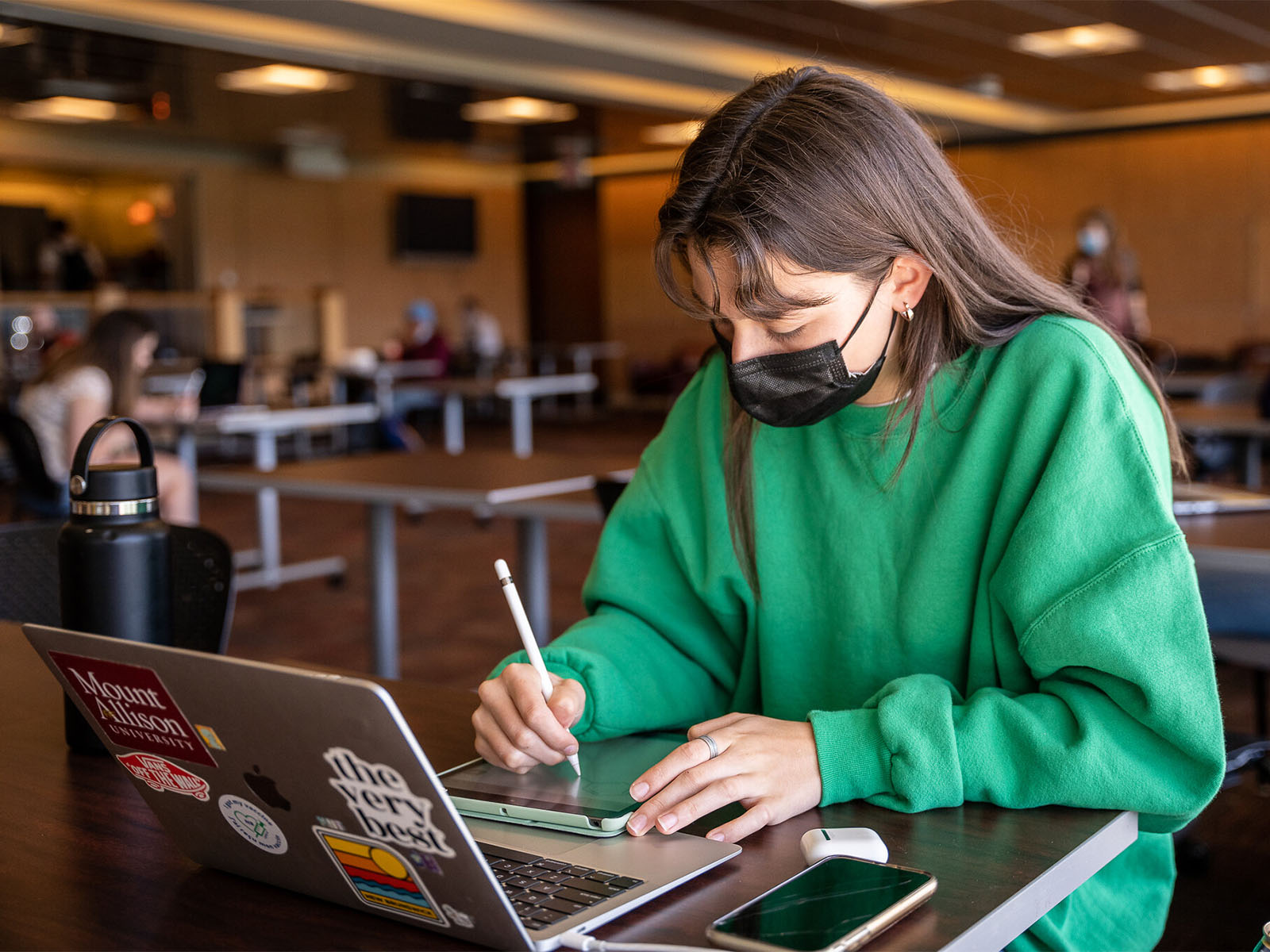
Online course content has also expanded Mount Allison’s capacity to offer courses remotely. Mount Allison should use this opportunity to expand its reach to a wider range of learners and to adapt teaching technology and online delivery options to enhance pedagogy.
Recommendations
- By 2023, determine an optimal distance learning platform or combination of platforms.
Requires action by: Purdy Crawford Teaching Centre, Senate Committee on Teaching and Learning, Computing Services, Academic Information Technology Committee
- By fall of 2022, begin offering part-time online courses during the fall/winter sessions in addition to spring/summer.
Requires action by: Purdy Crawford Teaching Centre, Senate Committee on Teaching and Learning, Computing Services, Academic Information Technology Committee, deans, academic units
- By fall of 2023, establish an on-site presence for distance education in Moncton.
Requires action by: Provost, deans
- By fall of 2022, establish a regular list of courses available as dual-credit for senior high school students.
Requires action by: Academic units, deans, Marketing and Communications, Registrar’s Office
- Commit to universal design for learning principles and provide professional development training for academic staff.
Requires action by: Purdy Crawford Teaching Centre, Senate Committee on Teaching and Learning, Computing Services, Provost, Deans, Meighen Centre
- Adapt courses, where possible, to include some or all of the following online components:
- Pre-recorded online course content (narrated slides, video lectures, presentations, films)
- Supplementary instructional videos
- Options for online assessments (quizzes, tests, lessons, exams, essays)
- Online course materials (readings, course documents)
- Online feedback components for peers and instructors (surveys, forums)
Requires action by: Faculty, Purdy Crawford Teaching Centre
10. Experiential learning
Experiential learning at Mount Allison can take many forms: field work, internships, community engaged learning, work-integrated learning, laboratory work, etc.
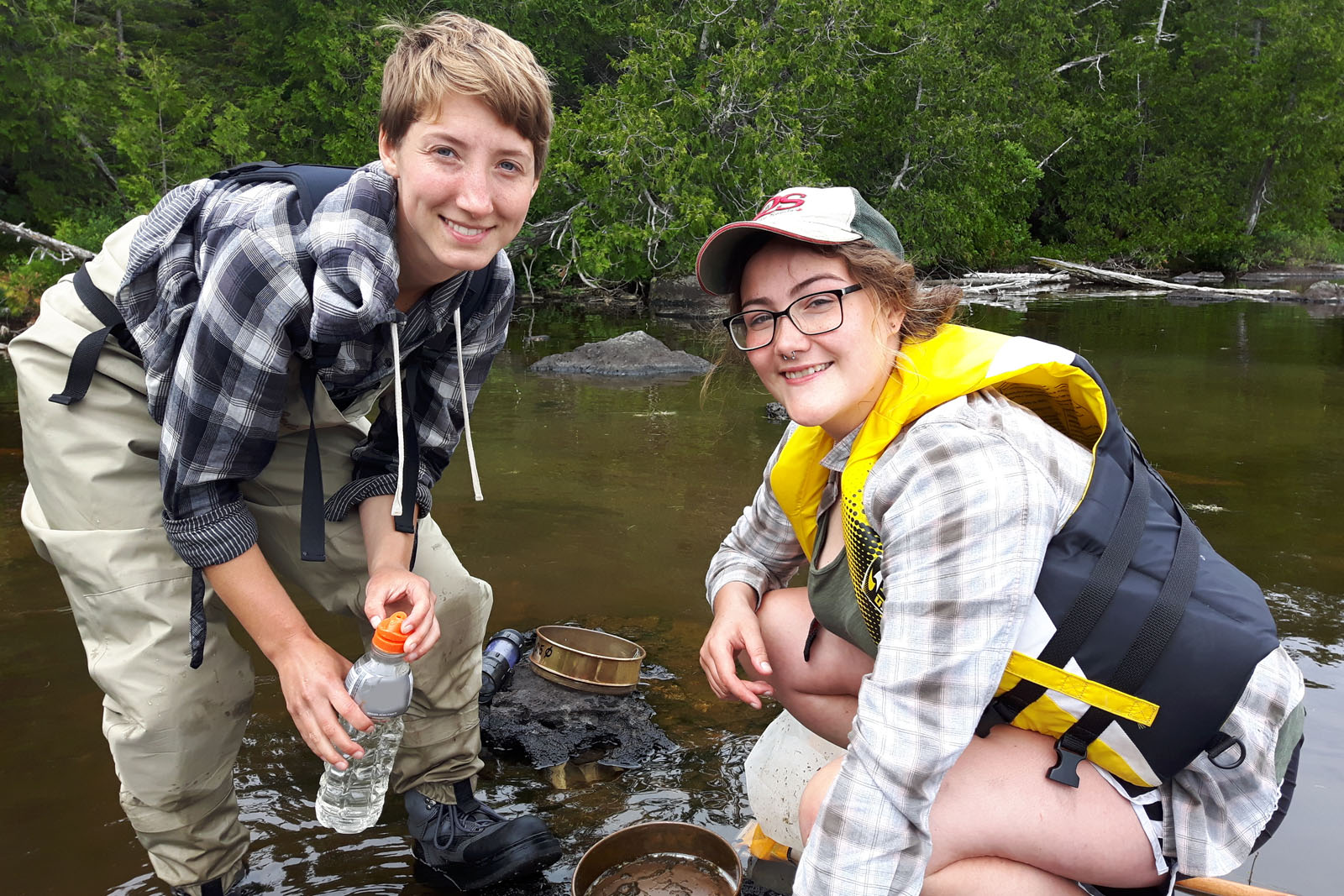
These enhance the student experience by connecting their classroom learning to real-world situations and problems. To promote more of these opportunities, we require training for academic staff, simplified procedures, clear regulations, awareness for students, and data on our level of activity.
Recommendations
- By winter of 2022, confirm internally accepted categories of experiential learning.
Requires action by: Senate Committee on Experiential Learning
- Provide professional development training to academic staff on how to incorporate experiential learning opportunities into their courses if they choose to.
Requires action by: Purdy Crawford Teaching Centre
- By spring of 2022, code experiential learning courses in Connect to collect better data and denote these courses in the University calendar and the website.
Requires action by: Academic unit heads and directors, deans, Registrar’s Office, Experiential Learning Office, Marketing and Communications
- In spring of 2022, create a program-based course number for group experiential learning courses.
Requires action by: Academic Matters (Curriculum and Programs) Committee, Registrar’s Office, Senate
- By winter of 2022, simplify the process for approving student experiential learning opportunities, and determine regulations governing credit assignment for experiential-learning opportunities.
Requires action by: Senate Committee on Experiential Learning, Academic Matters (Regulations) Committee, Faculty Council, Senate
11. Learning environment
The Mount Allison Strategic Roadmap highlights a 21st-century learning environment as one of its four strategic pillars.
Most classroom spaces on campus were built to facilitate passive learning and lecture-style teaching. While there is still an important role for this type of pedagogy in some disciplines, there also needs to be space, facilities, and technology that supports active learning, innovative pedagogy, and principles of universal design for learning.
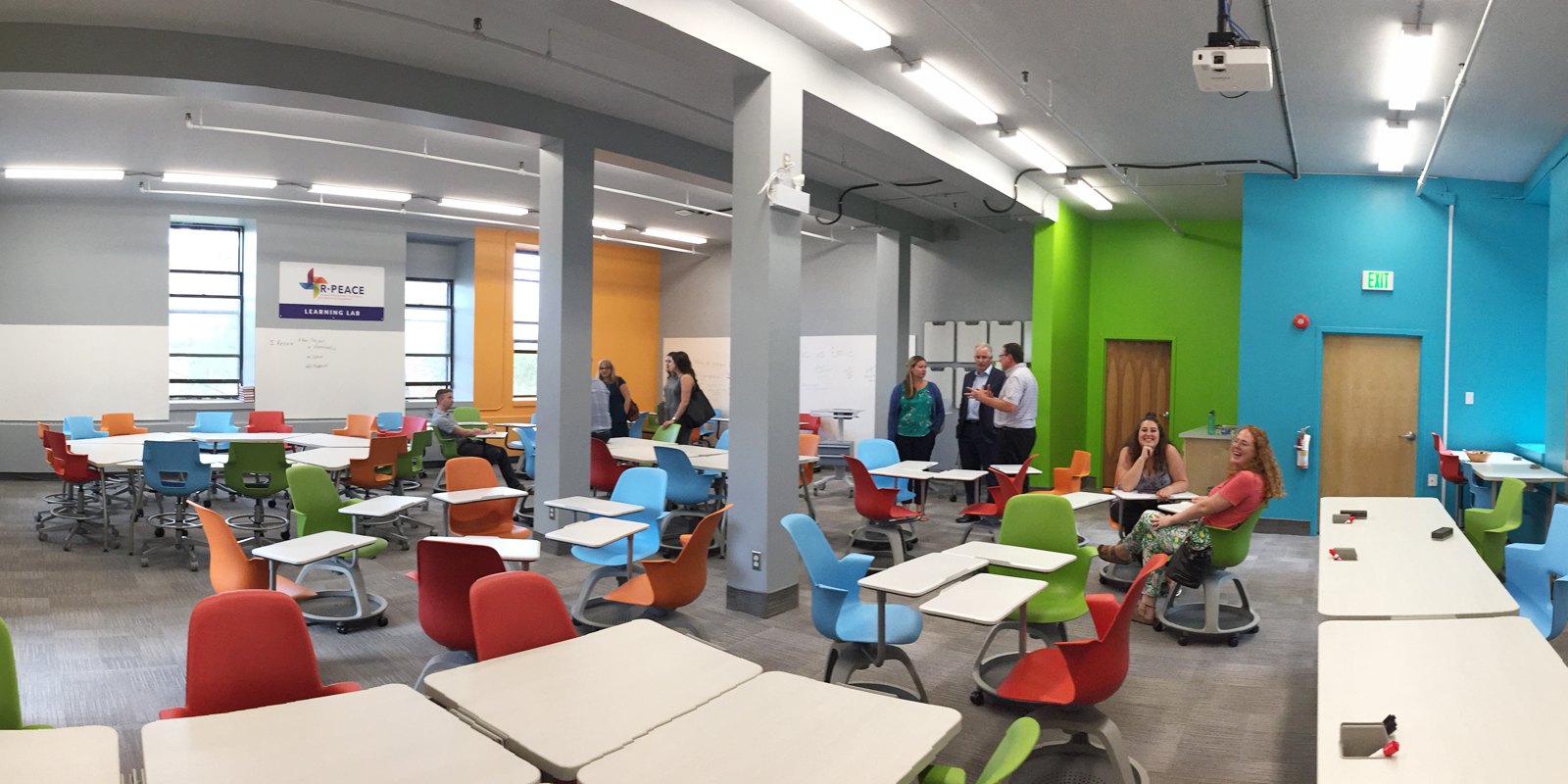
The Purdy Crawford Teaching Centre will play an important role in driving innovation in teaching and learning. This requires a dedicated space as well as a full-time director.
Recommendations
- Immediately conduct a survey of academic staff to determine priorities for teaching and laboratory space improvements, technology requirements, professional development opportunities, functions of the Purdy Crawford Teaching Centre, and roles and requirements for the director of the Purdy Crawford Teaching Centre.
Requires action by: Provost, Learning Environment Working Group
- In the winter term of 2022, launch two new IDEAS LAB spaces: an innovative pedagogy space (teacher sandbox) and an entrepreneurial and experiential learning café-style space. These will also serve as interim spaces for the Purdy Crawford Teaching Centre and eventually managed by the director of the Purdy Crawford Teaching Centre. These will become available in the Fall 2022 term for faculty to experiment with new pedagogical initiatives and learning experiences.
Requires action by: Office of Advancement, Facilities Management, Computing Services, Marketing and Communications, dean of arts, Experiential Learning and Career Development
- By July 2022 re-establish a director of the Purdy Crawford Teaching Centre.
Requires action by: Provost, President’s Cabinet, Human Resources
- By 2025, launch the newly designed R.P. Bell Library as a contemporary library/learning commons and centre for innovation and learning. This will become the permanent home of the Purdy Crawford Teaching Centre.
Requires action by: University Advancement, President, President’s Cabinet, University Librarian, Library, Facilities Management, Computing Services
- By 2023, establish a teaching-space upgrade and renovation plan including accessibility, furniture, hyflex class capacity, and universal design for learning requirements.
Requires action by: Senate Committee on Teaching and Learning, Facilities Management, Computing Services, University Advancement, provost and deans, Meighen Centre
12. Academic structure
Mount Allison maintains a traditional academic structure of discrete disciplinary-based departments contained within one of three Faculties, each administered by a dean: Arts, Science, and Social Sciences.
This structure supports some disciplines quite well while some others are disadvantaged. With the proliferation of new programming over the past several years, the structure has become more complicated as disciplines have evolved.
Current structure and recommendations
Some interdisciplinary programs fit nicely into traditional departments (International Relations in Politics, Community Engaged Learning in Religious Studies), while others are not easily supported by a traditional departmental structure (Health Studies, Visual and Material Culture Studies, Women’s and Gender Studies).
There are also many interdisciplinary programs that do not have departmental homes, which is problematic for many reasons. The academic structure should properly support the range of academic activities in the University, promote collaboration, relieve unnecessary administrative burdens, and allow for growth and innovation.
RECOMMENDATIONS
- In the winter term of 2022, the provost will establish a visioning group of faculty to propose possible changes to the academic structure, based on the following principles:
a. Academic disciplines should retain a place of prominence in the structure, but the structure should also foster enhanced collaboration with other disciplines and programs
b. Interdisciplinary programs should be properly supported in the structure
c. We should explore the distinction between a department as an administrative unit and a program as an area of student concentration to better support “homeless” interdisciplinary programs
d. The structure should reflect a 21st-century liberal arts education
Requires action by: Provost
- Potential changes to the University Senate structure may be proposed to the Board of Regents to reflect any changes to the academic structure.
Requires action by: Senate, Board of Regents
13. Research
Mount Allison has an active and vibrant research culture across all three faculties, a graduate program in biology and chemistry, and many faculty members who are recipients of prestigious grants.
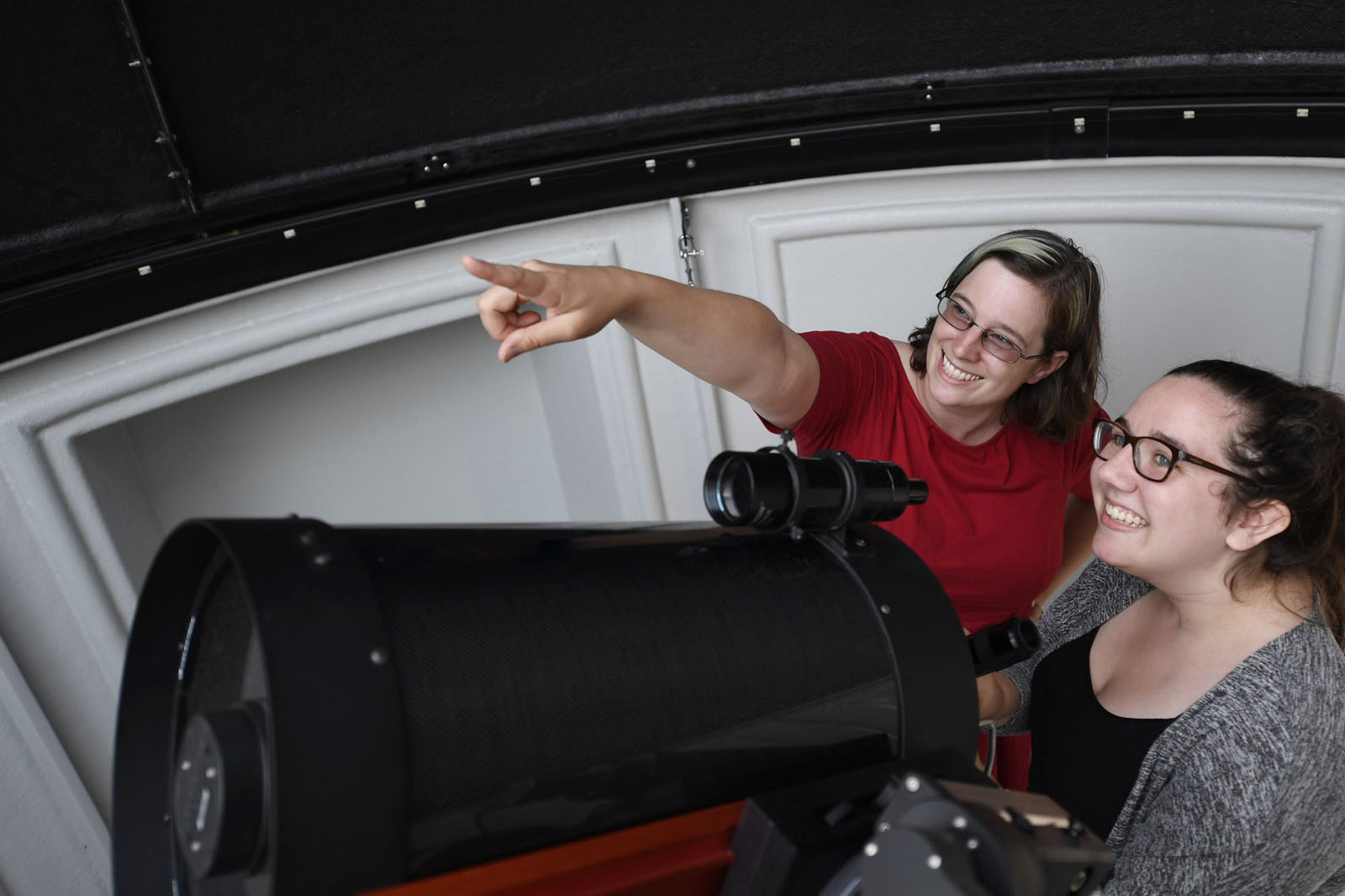
Since these research programs are carried out alongside teaching and mentoring, students have opportunities to engage in research with faculty who are generating new knowledge during their education. In increasing the visibility and appreciation of research at Mount Allison, the Strategic Academic Plan proposes the following recommendations to foster an accessible and lively research culture to support faculty in their research programs.
Recommendations
- Increase the overall visibility of research at Mount Allison, including more external website presence around active grant recipients, current research projects, current graduate students, and research news. Create an online central resource for Tri-council grants as well as other internal and external grants and funding opportunities.
Requires action by: Provost and deans, Marketing and Communications, Research Service, Libraries and Archives, University Advancement
- Identify and reduce barriers and administrative processes slowing down the facilitation of funded research activities, including graduate studies. When research is funded, allocate dedicated operational and maintenance resources for research-related acquisitions and equipment.
Requires action by: Facilities Management, Computing Services, Financial Services, vice-president academic and research, vice-president finance and administration
- Create an academic staff research mentorship program for early and mid-career researchers, including research triangles and regular networking events. This can also include targeted faculty mentorship beyond Tri-council grants. Also create a mentoring group for academic staff members who are planning on promotion from associate to full professor or librarian.
Requires action by: Provost, deans, Research Services, department heads
- Support and foster a culture of research appreciation as well as support for non-traditional and community research. This can include resources for small events, facilitated conversations, webinars, website presence, and mentorship groups. Academic staff mentoring will also be recognized as service work.
Requires action by: Provost, deans, Research Services, Research and Creative Activities Committee, Library and Archives
- By spring of 2022, respond to external review of the Office of Research Services and determine a resource and administration plan, which will include graduate studies. This initial response and plan will then lead to a separate strategic research plan, involving faculty and other contributors.
Requires action by: Provost, deans, Research Services
- By fall of 2022, create an internal online database of past successful grant applications, with permission, allowing early- and mid-career researchers to access them for reference through the Faculty and Staff Gateway. Create and maintain a list of experts/senior researchers for media consultation or mentoring.
Requires action by: Research Services
- Dedicate more support to faculty members taking on research roles within the University, such as a course release for the Research Ethics Board Chair and Animal Care Committee Chair.
Requires action by: Provost, deans
- Support community-related research projects and funding options through avenues such as municipalities, provincial governments, NGOs, Indigenous communities, and non-profit organizations and partners.
Requires action by: Provost, Research Services, University Advancement
- By winter of 2022, re-evaluate the funding guidelines and evaluation criteria for the President's Research and Creative Activities (PRCA) Fund to ensure it meets the needs of our faculty complement, including an analysis of eligible expenses and the provision of having multi-year PRCA awards for faculty engaged with community partners, particularly Indigenous groups where appropriate engagement and relationships are vital.
Requires action by: Provost, Research Services, Research and Creative Activities Committee
- Commit to securing resources for graduate student funding such as scholarships, bursaries, etc. to support graduate student stipends.
Requires action by: Provost, Research Services, University Advancement
14. Internationalization and global citizenship
Mount Allison fosters a rich and diverse environment of international students, with currently 320 international learners hailing from over 60 different countries.
Study abroad opportunities for Mount Allison students are available at 34 partner universities in 21 countries. An international perspective is also woven throughout many courses taught across the University from faculty who are globally connected and engaged.

As we strive to enrich this experience for students, we aim to increase access and support, both for students coming to Mount Allison from abroad, and Mount Allison students pursuing an international experience in a partner country. Faculty collaboration with international colleagues will also be a priority, and these opportunities will nurture an even more diverse and vibrant academic community.
Recommendations
- By spring of 2022, dedicate staffing and resources in the International Centre and Registrar’s Office to process transfer credits more efficiently from international institutions. Create systems whereby recognized partner institutions have direct Mount Allison credit equivalencies rather than undesignated credits.
Requires action by: Provost, Registrar’s Office, International Centre
- Create more support structures and opportunities for international students who are studying at Mount Allison: increased ESL support; scholarship and bursary opportunities; access to internships.
Requires action by: Academic Support Services, University Advancement
- Increase access to funding opportunities for Mount Allison students who wish to study abroad. Also develop further supports for students studying abroad in their host country, potentially through Canadian consulates.
Requires action by: International Centre, University Advancement
- Develop opportunities for Mount Allison students to pursue international internships or work experience in partner countries or institutions.
Requires action by: International Centre, Experiential Learning and Career Development Office
- Increase remote access to Mount Allison courses for international students, particularly from introductory and first-year courses, in order to ease their transition to Canada.
Requires action by: Registrar’s Office, International Centre, academic units
- Create and foster further opportunities for academic staff to pursue international exchanges for research or collaboration with colleagues at partner institutions.
Requires action by: Academic units, deans, Office of Research Services, University Advancement
- Explore possible institutional partnership agreements in regions of the world where we have yet to forge connections, such as Africa, areas of Southeast Asia, and South America.
Requires action by: International Centre, Senate
- Explore Collaborative Online International Learning Opportunities (COILs) between Mount Allison faculty and faculty from international institutions and establish an inventory of participating institutions and criteria.
Requires action by: International Centre, academic units, deans, Computing Services, Purdy Crawford Teaching Centre
15. Engagement with students after graduation
Mount Allison graduates deeply value their student experience and continue to remain connected to the University as alumni.
Based on a 2020 survey, younger alumni tend to feel a stronger connection to their home department or program, while older alumni are more engaged with the University as a whole.
Recommendations
These recommendations propose ways in which we can better engage with younger alumni while making routes to those connections easier and more streamlined.
With Alumni Engagement, faculty, and departments working together, we can create new initiatives which foster meaningful connections while making graduate engagement more far-reaching and accessible.
RECOMMENDATIONS
- Cultivate stronger partnerships between individual departments and Alumni Engagement to better connect with younger alumni. This could include a more streamlined channel for faculty to access alumni contact information, e-newsletters, online resource hubs, social media strategy, and invitations for speakers.
Requires action by: Department heads, faculty, Alumni Engagement, Marketing and Communications
- Establish a channel for faculty to suggest young alumni for features in alumni communication platforms (The Record, Allisonian Update e-newsletters, social media), with emphasis on their academic experience while at Mount Allison and their career path.
Requires action by: Department heads, faculty, Alumni Engagement
- Foster internal conversations within departments, academic units, and programs on how to create a stronger cohort feeling for student groups.
Requires action by: Faculty, department heads
- Create additional engagement programs such as the current “Virtual Mount Allison Book Club” to increase young alumni engagement and enhance their connection with faculty members.
Requires action by: Faculty, Alumni Engagement
- Establish a regular podcast between faculty and alumni to discuss research, teaching, and creative activity, and how Mount Allison or particular faculty members influenced a graduate’s career.
Requires action by: Faculty, Alumni Engagement
- Explore possibilities for an online alumni career hub, in which faculty, departments and/or alumni can contribute to. Work with Career Services and individual departments who are doing this on an ad-hoc basis to centralize resources.
Requires action by: Faculty, department heads, Career Services, Alumni
16. Mount Allison 2039
The recommendations outlined in this Strategic Academic Plan are only a first step towards strategic renewal. These concrete actions, once mobilized, will set Mount Allison on a path towards a culture of innovation, an even more caring and connected community, and a sustainable future. We must think well beyond 2025 though.
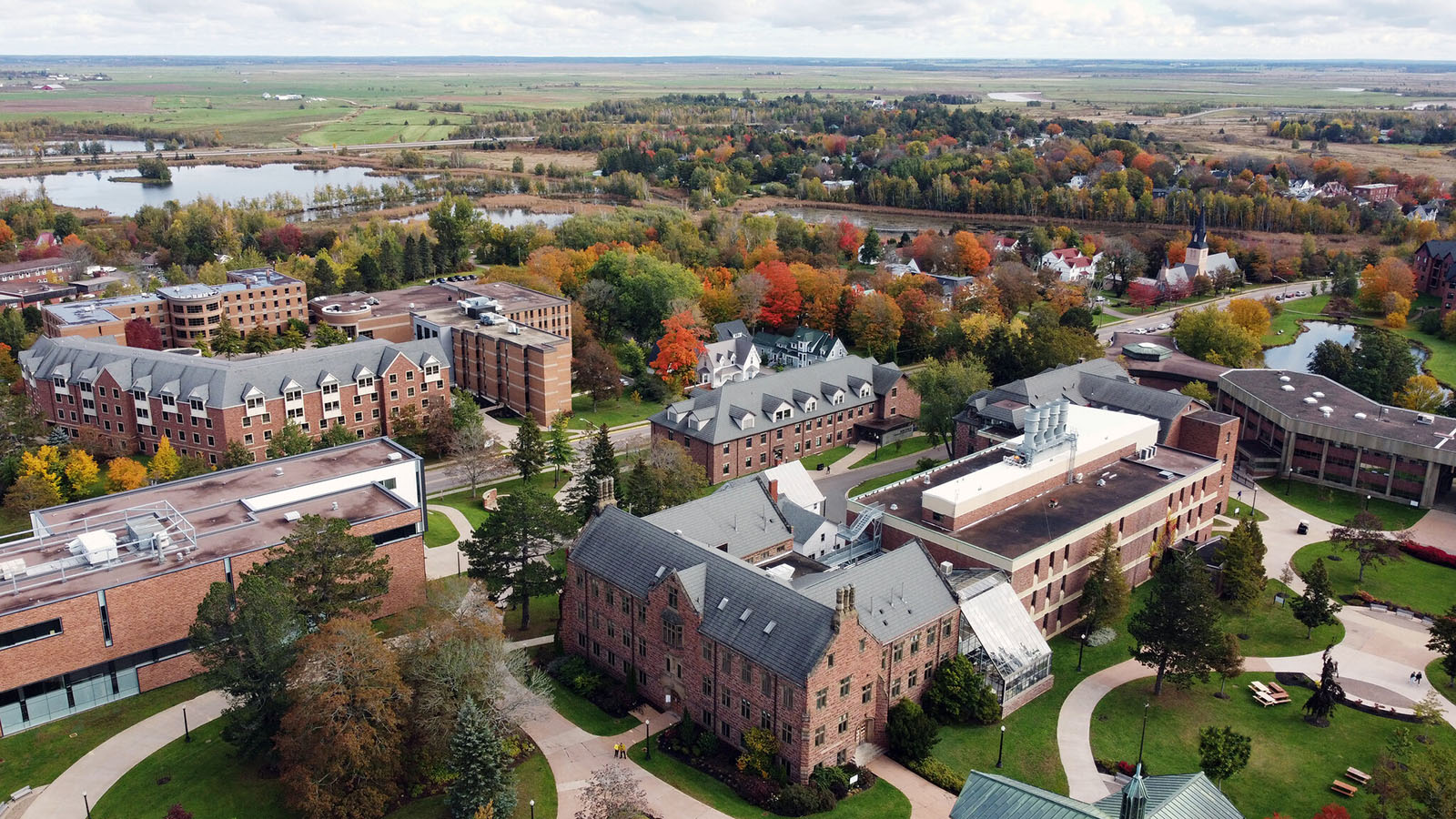
2039 and recommendation
The year 2039 marks the bicentennial of Mount Allison’s founding. While undoubtedly the University has changed radically over the past 200 years, this likely did not happen in an intentional way or with an idea of creating enduring change.
Universities tend to instead be reactive to the moment or the immediate future. A sustainable and thriving Mount Allison will be able to naturally adapt to the changing post-secondary education landscape while retaining its core mission and values. To this end, we offer one final recommendation:
RECOMMENDATION
The provost will immediately establish a Mount Allison 2039 visioning group, which will begin the conversation as to what we believe Mount Allison should be. Essentially, the question will be: if we were to establish Mount Allison as a brand-new university in 2039, what would that university look like and how would it thrive in perpetuity?
Requires action by: Provost, faculty, staff, and students
17. Summary of recommendations
All recommendations
- Academic Programs will evaluate the ways in which they can immediately contribute, or can improve their contribution, to achieving these goals.
- Academic Programs will consider which of these other goals are appropriate to the program and how they can be achieved.
- By 2025, have at least five Indigenous tenured or tenure-track faculty members, at least two of whom shall be Mi’kmaq.
- By 2025, internally approve a major and minor program in Indigenous Studies for submission to the MPHEC.
- Mi’kmaq language course shall become a regular course offering beginning in 2022.
- Indigenous Advisory Circle shall develop a protocols document for working with Indigenous students and Indigenous members of the wider community. This document will also inform how non-Indigenous persons can respectfully interact with Indigenous materials.
- Hiring procedures, career evaluation criteria, and research evaluation criteria will be revised to better support the hiring and career advancement of Indigenous faculty, and BIPOC faculty more generally.
- Academic Matters course and program forms will request information about decolonization initiatives.
- Create an information program on decolonizing the academy that includes resources on ways to decolonize all academic disciplines. This may include guest speakers and workshop leaders, a resource page on Gateway, peer learning sessions, training on research protocols and other initiatives.
- The Libraries and Archives will review its collections, cataloguing and classification, instruction, spaces, and services in relation to the Truth and Reconciliation Commission of Canada’s Calls to Action and the CFLA-FCAB Truth and Reconciliation Report and Recommendations.
- (Re)commit to supporting existing programs undergraduate and graduate degree programs and the further development of graduate studies.
- By 2023, create new Bachelor of Arts and Science programs in areas of student interest.
- By spring of 2022, conduct an inventory of existing embedded certificates to determine obstacles to completion and with the aim of improving student advising. The placement of certificates in the university calendar will also be reviewed for better visibility.
- Create standalone certificates in areas of potential student interest, with an intention of increasing access to different learner demographics and providing students with in-demand skills and competencies. These may run during the normal fall/winter course schedule, be taken in successive summer terms, or be available online. Academic Matters (Regulations) Committee will determine the basic structure and requirements for standalone certificates.
- By 2023, create two-year Associate Degrees in Arts (including Social Sciences). These will be non-major degrees but, with advising, can be continued as degree programs upon completion. Determine an appropriate administrative and advising mechanism for these programs.
- By spring 2022, allocate additional staffing resources to facilitate and promote articulation agreements, academic partnership agreements, and assess transfer credits. We will also pursue additional partnerships with academic institutions regionally and internationally.
- By 2023, create a part-time, distance, and extension learning course delivery option including, but also expanding upon, the spring/summer offerings. Additional staff resources will be allocated to administer this program.
- While part-time and distance education courses and programs may naturally employ part-time faculty members, new full-time degree programs will continue to be taught predominantly by full-time faculty members.
- A pilot version of a first-year foundations course will take place in the fall of 2022 for a limited number (app. 100) of incoming students. A steering committee of interested academic staff, librarians, and students will design the course in the winter of 2022. A survey of students and faculty involved in the course will be conducted at the end of the fall term to determine feasibility and desire to continue. The course will count as a distribution credit for entering students in the fall of 2022.
- A review of the distribution credit system will take place in the winter of 2023 to determine if this course (or an expanded version of this course) could be a replacement.
- Pilot a two-week intensive teaching term (The A-Term) in the late summer of 2022. The term would take place during the two-week period prior to commencement of the fall term. The intensive term would permit a range of learning experiences including full-credit courses, field experiences, off-campus course components, and other possibilities. Courses that use the two-week term as a course component will continue during the fall term with a suitably reduced class schedule. Courses completed in full or in part during the intensive term will still be registered during the fall term.
- Work with the Office of University Advancement to source student bursary funds for students who may either have reduced summer employment hours in order to participate in this experience, or for who the costs of a course experience may limit accessibility.
- Academic staff will be offered professional development training in alternative assessment options and “ungrading.”
- By 2023, determine an optimal distance learning platform or combination of platforms.
- By fall of 2022, begin offering part-time online courses during the fall/winter sessions in addition to spring/summer.
- By fall of 2023, establish an on-site presence for distance education in Moncton.
- By fall of 2022, establish a regular list of courses available as dual-credit for senior high school students.
- Commit to universal design for learning principles and provide professional development training for academic staff.
- Adapt courses where possible to include some or all the following online components
• Pre-recorded online course content (narrated slides, video lectures, presentations, films)
• Supplementary instructional videos
• Options for online assessments (quizzes, tests, lessons, exams, essays)
• Online course materials (readings, course documents)
• Online feedback components for peers and instructors (surveys, forums)
- By winter of 2022, confirm internally accepted categories of experiential learning.
- Provide professional development training to academic staff on how to incorporate experiential learning opportunities into their courses if they choose to.
- By spring of 2022, code experiential learning courses in Connect to collect better data and denote these courses in the University calendar and the website.
- In spring of 2022, create a program-based course number for group experiential learning courses.
- By winter of 2022, simplify the process for approving student experiential learning opportunities, and determine regulations governing credit assignment for experiential-learning opportunities.
- Immediately conduct a survey of academic staff to determine priorities for teaching and laboratory space improvements, technology requirements, professional development opportunities, functions of the Purdy Crawford Teaching Centre, and roles and requirements for the director of the Purdy Crawford Teaching Centre.
- In the winter term of 2022, launch two new IDEAS LAB spaces: an innovative pedagogy space (teacher sandbox) and an entrepreneurial and experiential learning café-style space. These will also serve as interim spaces for the Purdy Crawford Teaching Centre and eventually managed by the director of the Purdy Crawford Teaching Centre. These will become available in the Fall 2022 term for faculty to experiment with new pedagogical initiatives and learning experiences.
- By July 2022 re-establish a director of the Purdy Crawford Teaching Centre.
- By 2025, launch the newly designed R.P. Bell Library as a contemporary library/learning commons and centre for innovation and learning. This will become the permanent home of the Purdy Crawford Teaching Centre.
- By 2023, establish a teaching-space upgrade and renovation plan including accessibility, furniture, hyflex class capacity, and universal design for learning requirements.
- In the winter term of 2022, the provost will establish a visioning group of faculty to propose possible changes to the academic structure, based on the following principles:
a) Academic disciplines should retain a place of prominence in the structure, but the structure should also foster enhanced collaboration with other disciplines and programs
b) Interdisciplinary programs should be properly supported in the structure
c) We should explore the distinction between a department as an administrative unit and a program as an area of student concentration
d) The structure should reflect a 21st-century liberal arts education
- Potential changes to the University Senate structure may be proposed to the Board of Regents to reflect any changes to the academic structure.
- Increase the overall visibility of research at Mount Allison, including more external website presence around active grant recipients, graduate students, current research projects, and research news. Create an online central resource for Tri-council grants as well as other internal and external grants and funding opportunities.
- Identify and reduce barriers and administrative processes slowing down the facilitation of funded research activities, including graduate studies. When research is funded, allocate dedicated operational and maintenance resources for research-related acquisitions and equipment.
- Create an academic staff research mentorship program for early and mid-career researchers, including research triangles and regular networking events. This can also include targeted faculty mentorship beyond Tri-council grants. Also create a mentoring group for academic staff members who are planning on promotion from associate to full professor or librarian.
- Support and foster a culture of research appreciation as well as support for non-traditional and community research. This can include resources for small events, facilitated conversations, webinars, website presence, and mentorship groups. Academic staff mentoring will also be recognized as service work.
- By spring of 2022, respond to external review of the Office of Research Services and determine a resource and administration plan, which will include graduate studies. This initial response and plan will then lead to a separate strategic research plan, involving faculty and other contributors.
- By fall of 2022, create an internal online database of past successful grant applications, with permission, allowing early- and mid-career researchers to access them for reference through the Faculty and Staff Gateway. Create and maintain a list of experts/senior researchers for media consultation or mentoring.
- Dedicate more support to faculty members taking on research roles within the University, such as a course release for the Research Ethics Board Chair and Animal Care Committee Chair.
- Support community-related research projects and funding options through avenues such as municipalities, provincial governments, NGOs, Indigenous communities, and non-profit organizations and partners.
- By winter of 2022, re-evaluate the funding guidelines and evaluation criteria for the President's Research and Creative Activities (PRCA) Fund to ensure it meets the needs of our faculty complement, including an analysis of eligible expenses and the provision of having multi-year PRCA awards for faculty engaged with community partners, particularly Indigenous groups where appropriate engagement and relationships are vital.
- Commit to securing resources for graduate student funding such as scholarships, bursaries, etc. to support graduate student stipends.
- By spring of 2022, dedicate staffing and resources in the International Centre and Registrar’s Office to process transfer credits more efficiently from international institutions. Create systems whereby recognized partner institutions have direct Mount Allison credit equivalencies rather than undesignated credits.
- Create more support structures and opportunities for international students who are studying at Mount Allison: increased ESL support; scholarship and bursary opportunities; access to internships.
- Increase access to funding opportunities for Mount Allison students who wish to study abroad. Also develop further supports for students studying abroad in their host country, potentially through Canadian consulates.
- Develop opportunities for Mount Allison students to pursue international internships or work experience in partner countries or institutions.
- Increase remote access to Mount Allison courses for international students, particularly from introductory and first-year courses, in order to ease their transition to Canada.
- Create and foster further opportunities for academic staff to pursue international exchanges for research or collaboration with colleagues at partner institutions.
- Explore possible institutional partnership agreements in regions of the world where we have yet to forge connections, such as Africa, areas of Southeast Asia, and South America.
- Explore Collaborative Online International Learning Opportunities (COILs) between Mount Allison faculty and faculty from international institutions and establish an inventory of participating institutions and criteria.
- Cultivate stronger partnerships between individual departments and Alumni Engagement to better connect with younger alumni. This could include a more streamlined channel for faculty to access alumni contact information, e-newsletters, online resource hubs, social media strategy, and invitations for speakers.
- Establish a channel for faculty to suggest young alumni for features in alumni communication platforms (The Record, Allisonian Update e-newsletters, social media) with emphasis on their academic experience while at Mount Allison and their career path.
- Foster internal conversations within departments, academic units, and programs on how to create a stronger cohort feeling for student groups.
- Create additional engagement programs such as the current “Virtual Mount Allison Book Club,” to increase young alumni engagement and enhance their connection with faculty members.
- Establish a regular podcast between faculty and alumni to discuss research, teaching, and creative activity, and how Mount Allison or particular faculty members influenced a graduate’s career.
- Explore possibilities for an online alumni career hub, which faculty, departments or older alumni can contribute to. Work with Career Services and individual departments who are doing this on an ad-hoc basis to centralize resources.
- The provost will immediately establish a Mount Allison 2039 visioning group, which will begin the conversation as to what we believe Mount Allison should be. Essentially, the question will be: if we were to establish Mount Allison as a brand-new university in 2039, what would that university look like and how would it thrive in perpetuity?
18. Working groups
Working group membership
DECOLONIZATION
Brandon Blakney, Glen Briand, Barb Clayton, Chris Down, Emily Falvey, Victoria Fraser, Amber Haley Solomon, Karl Hele, Krista Johnston, Dianne Keeping, Hannah Lane, Matthew Litvak, Jeff Ollerhead, Linda Pearse, Rosemary Polegato, Greg Sandala
CREDENTIALS AND PROGRAMS
Brandon Blakney, Justin Liefer, Alan Dodson, Amatoritsero Ede, Christina Ionescu, Krista Johnston, Christiane Major, Toni-Anne Marie Dixon, Kevin Morse, Stephen Runge, Erin Steuter, Maria Thistle, Spencer Keller
FIRST-YEAR EXPERIENCE
Hannah Crouse, Emily Austen, Shelly Colette, Chris Down, Astrid Frances Krueger, James Kalyn, Dianne Keeping, Grace MacLean - de Stecher, Christiane Major, Rohin Minocha-McKenney, Kevin Morse, Jill Rourke, Erin Steuter
TEACHING-YEAR STRUCTURE
Kirsty Bell, Karen Crosby, Karl Hele, Christiane Major, Andrew Nurse, Carol Pomare, Toni Roberts, Stephen Runge, Karen Stentaford, Erin Steuter, Maria Thistle, Andrew Wilson
GRADING AND ASSESSMENT
Hannah Crouse, Brandon Blakney, Chris Down, Astrid Frances Krueger, David Lieske, Christiane Major, Rohin Minocha-McKenney, Andrea Morash, Erin Steuter, Spencer Keller
ONLINE LEARNING
Genevieve Desmarais, Alan Dodson, Julia Grace Kaufmann, Dianne Keeping, Carol Pomare, Toni Roberts, Erin Steuter, Jennifer Tomes
EXPERIENTIAL LEARNING
Hannah Crouse, Susie Andrews, Fiona Black, Barb Clayton, Justin D Liefer, Erik Edson, Emily Falvey, Nauman Farooqi, Victoria Fraser, Dianne Keeping, Patricia Kelly Spurles, Hannah Lane, Rebecca Leaman, Vett Lloyd, Rohin Minocha-McKenney, Rachelle Pascoe Deslauriers, Rosemary Polegato, Tim Reiffenstein, Toni Roberts, Greg Sandala, Leslie Shumka, Erin Steuter, Maria Thistle, Doruk Uysal Irak
LEARNING ENVIRONMENT
Genevieve Desmarais, Irena Ehrman, James Kalyn, Dianne Keeping, Kevin Morse, Rosemary Polegato, Toni Roberts, Leslie Shumka, Louise Wasylkiw
ACADEMIC STRUCTURE
Doug Campbell, Alan Dodson, Nauman Farooqi, Diana Hamilton, Christina Ionescu, Beth Jewett, James Kalyn, Dianne Keeping, Joshua Kurek, Mario Levesque, Christiane Major, Kevin Morse, Rachelle Pascoe Deslauriers, Stephen Runge, Greg Sandala, Vicki St. Pierre, Erin Steuter, Andrew Wilson
RESEARCH
Susie Andrews, Lauren Beck, Doug Campbell, Karl Hele, Krista Johnston, Dianne Keeping, Joshua Kurek, Mario Levesque, Vett Lloyd, Tyson MacCormack, Andrea Morash, Carol Pomare, Greg Sandala, Renata Schellenberg, Maria Thistle, Ardath Whynacht
INTERNATIONALIZATION AND GLOBAL CITIZENSHIP
Susie Andrews, Kirsty Bell, Barb Clayton, Amatoritsero Ede, Nauman Farooqi, Christina Ionescu, Krista Johnston, Matthew Litvak, Toni-Anne Marie Dixon, Rosemary Polegato, Carol Pomare, Greg Sandala, Renata Schellenberg, Doruk Uysal Irak
ENGAGEMENT WITH STUDENTS AFTER GRADUATION
Brandon Blakney, Carolle de Ste. Croix, David Fleming, Patricia Kelly Spurles, Kevin Morse, Jennifer Tomes
UNIVERSITY PLANNING COMMITTEE
Brandon Blakney, Peter Brown, James Devine, Erik Edson, Nauman Farooqi, Jeff Hennessy (Chair), Christina Ionescu, Dianne Keeping, Astrid Krueger, Anne LePage, Vicki Meli, Jennifer Tomes, Vicki St. Pierre

